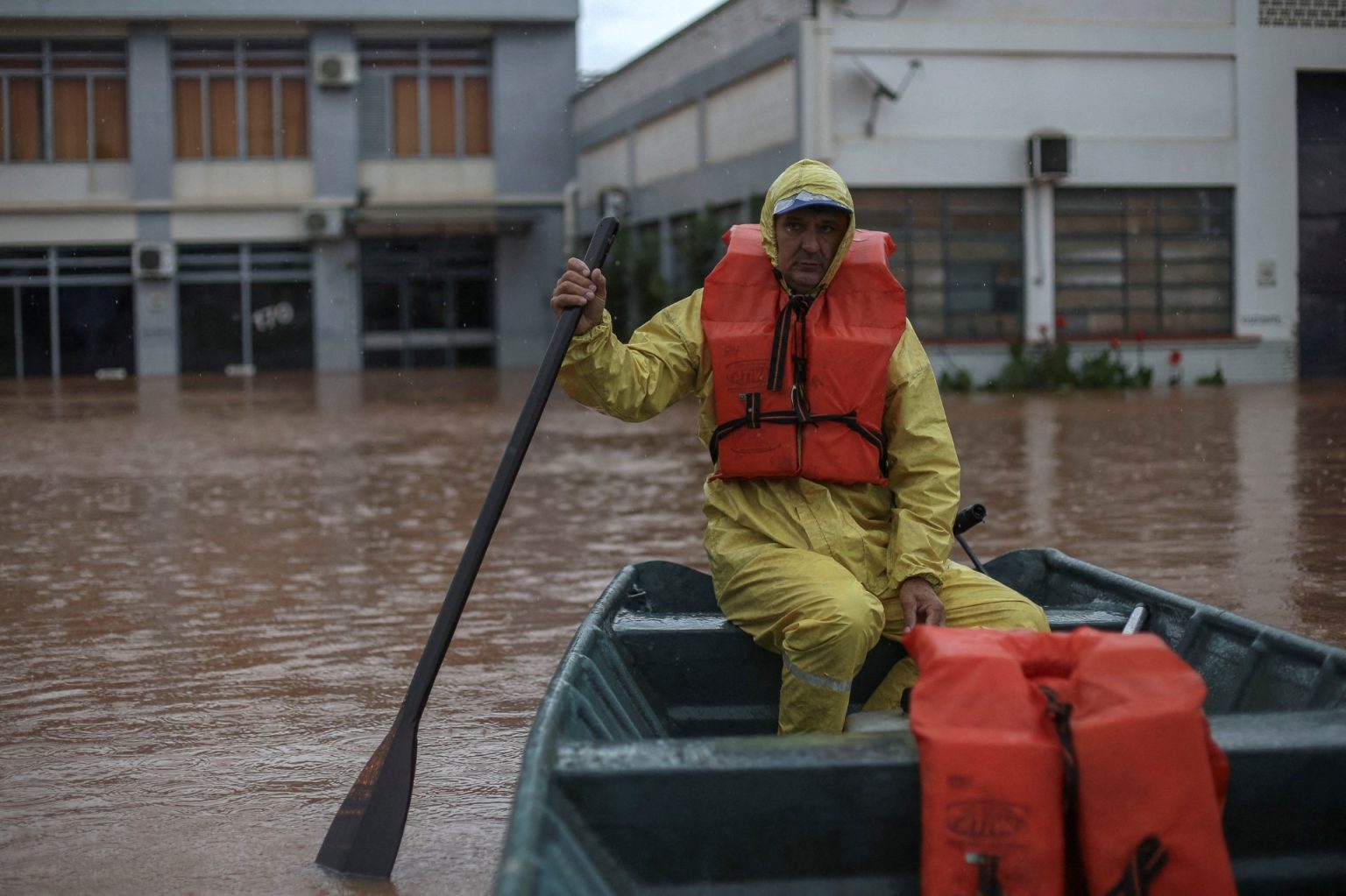Heavy rains in Brazil’s southern Rio Grande do Sul state have led to a death toll of 29 people, with at least 60 others missing, according to the state’s civil defence agency. The state has declared a state of emergency as rescuers search for missing individuals among collapsed homes, bridges, and roads. Rescuers and soldiers are working to free families trapped in their homes, many of whom are stranded on rooftops to escape rising waters. The storm damage has affected nearly 150 municipalities in the state, injuring 36 people and displacing over 10,000.
Governor Eduardo Leite has described the situation as the worst disaster in the state’s history, with the number of deaths expected to increase. Brazilian President Luiz Inacio Lula da Silva has promised to provide necessary resources to minimize the suffering caused by the extreme event. Federal authorities have already deployed aircraft, vehicles, boats, and soldiers to assist with various relief efforts including clearing roads, distributing essential supplies, and setting up shelters. Forecasts warn that the main Guaiba river in the state could rise to dangerous levels, further exacerbating the situation.
Entire communities in Rio Grande do Sul have been cut off due to destroyed bridges and blocked roads, leaving towns without essential services like telephone and internet. Authorities are advising people to avoid areas along state highways to prevent mudslides and urging those living near rivers or hillsides to evacuate. The flooding has left hundreds of thousands without access to drinking water and forced the suspension of classes statewide.
Furthermore, recent extreme weather events in Brazil, including the floods in Rio Grande do Sul, are believed to be influenced by climate change. This disaster comes amidst a cold front affecting the south and southeast regions following extreme heat waves. The ongoing rescue and relief efforts are crucial in helping affected communities recover from the devastation caused by the heavy rains and flooding in the state.













